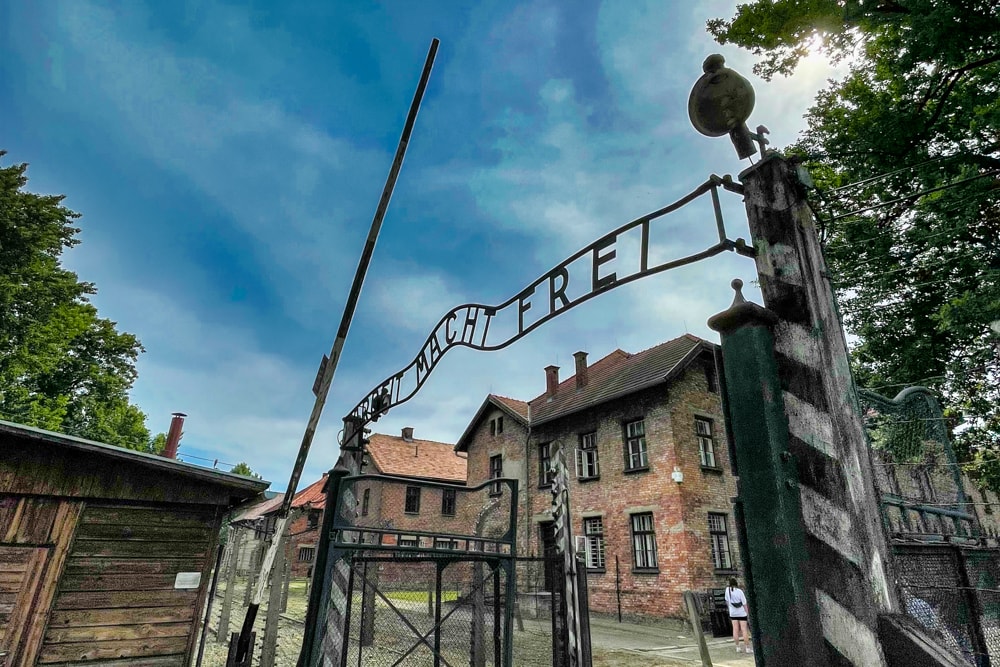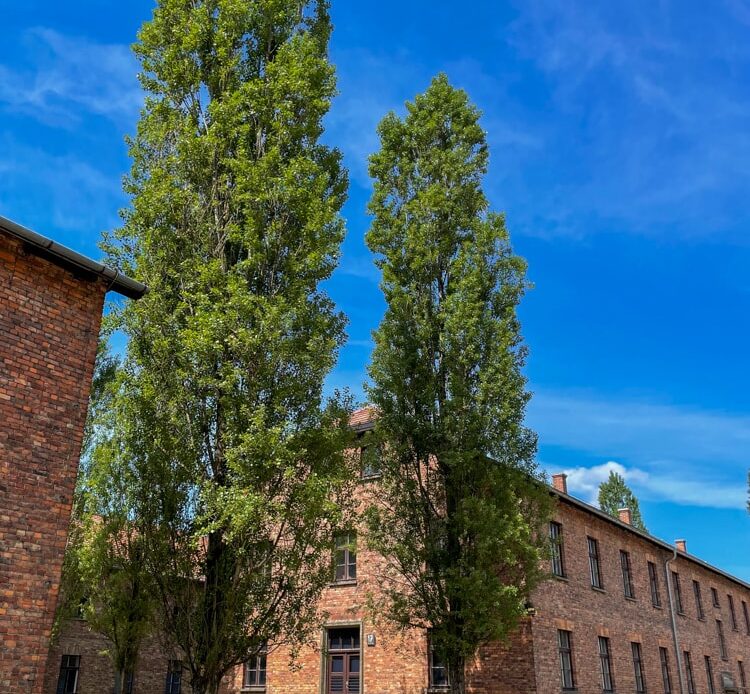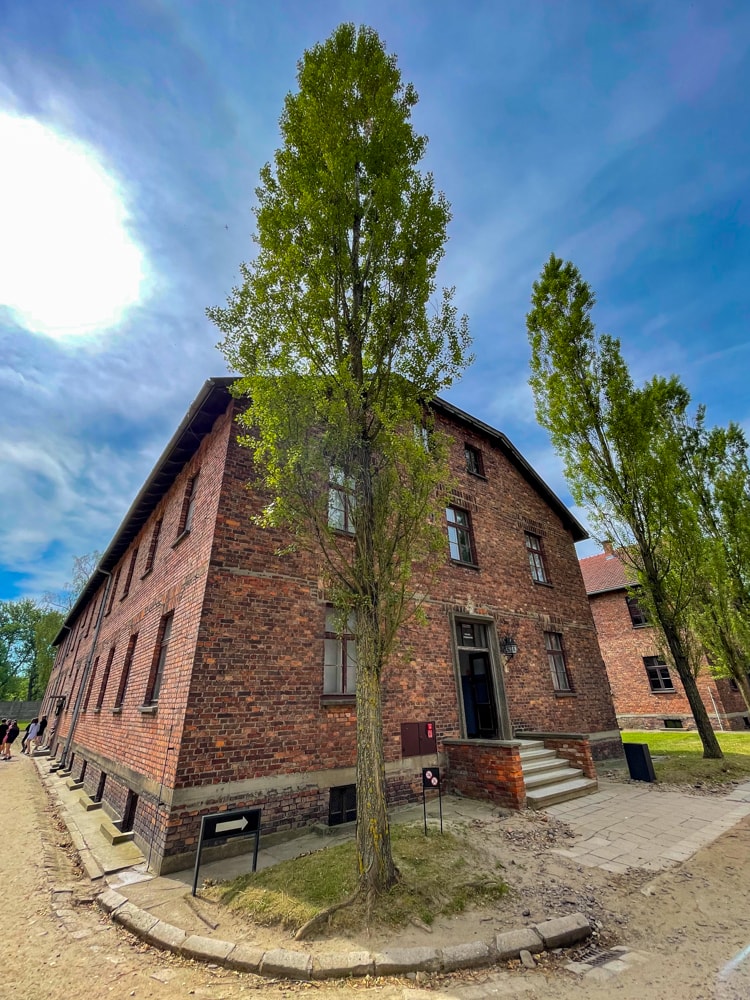Kia reflects on a visit to Auschwitz from Kraków and defends what some dismiss as problematic tourism
The famous gates of Auschwitz are startling, not because they’re sinister or imposing but the very opposite. Usually depicted in black and white, these gates have featured in myriad Holocaust films and documentaries. Today, however, they’re not in menacing monochrome or veiled in evocative fog. Rather, they’re bathed in sunlight with a blazing blue sky behind.
Inside, there is a symmetry of pretty trees. By the time I arrive at the neat brick buildings, I am thoroughly disoriented. This is not the picture I expected. Instead of squat grey concrete, this could pass for a retirement home – a fact I note uneasily.
The temptation then is to leach our pictures of colour, but that would also leach them of truth. The reality is, of course, that evil can occur in the very midst of beauty. When I ask our educator about the trees, she explains that the SS guards wanted their workplace to be pretty. The ghastly fact silences our group.
There are 30 of us in total, which initially preoccupies me. Peter and I paid extra to join a smaller group but a mixup landed us here. The group is large and unwieldy, and as we weave in and out of buildings, there is little time to pause and reflect.
The educator, however, is brilliant and expertly shepherds us around the grounds. We pause at a map and my quibbles are quickly forgotten. The map shows Auschwitz, Birkenau and Monowitz which, together with a number of sub-camps, are collectively known as the Auschwitz concentration camp.

Auschwitz I, the main camp, was a detention site with prisoner numbers ranging from 15,000 to over 20,000. Birkenau, sometimes known as Auschwitz II, was an extermination camp that held over 90,000 prisoners at times. Monowitz was a labour camp that held 12,000 prisoners. Historians estimate that, together, these camps killed over 1.1 million people, a million of whom were Jews.
It’s hard to fathom these numbers given their magnitude, which is why I would encourage visitors to read around the subject. For me, the most illuminating text was Primo Levi’s If This Is a Man. The Italian chemist was imprisoned at Monowitz and writes about the horrors of the Holocaust in a manner both gentle and urgent, providing essential context…
Click Here to Read the Full Original Article at Atlas & Boots…

